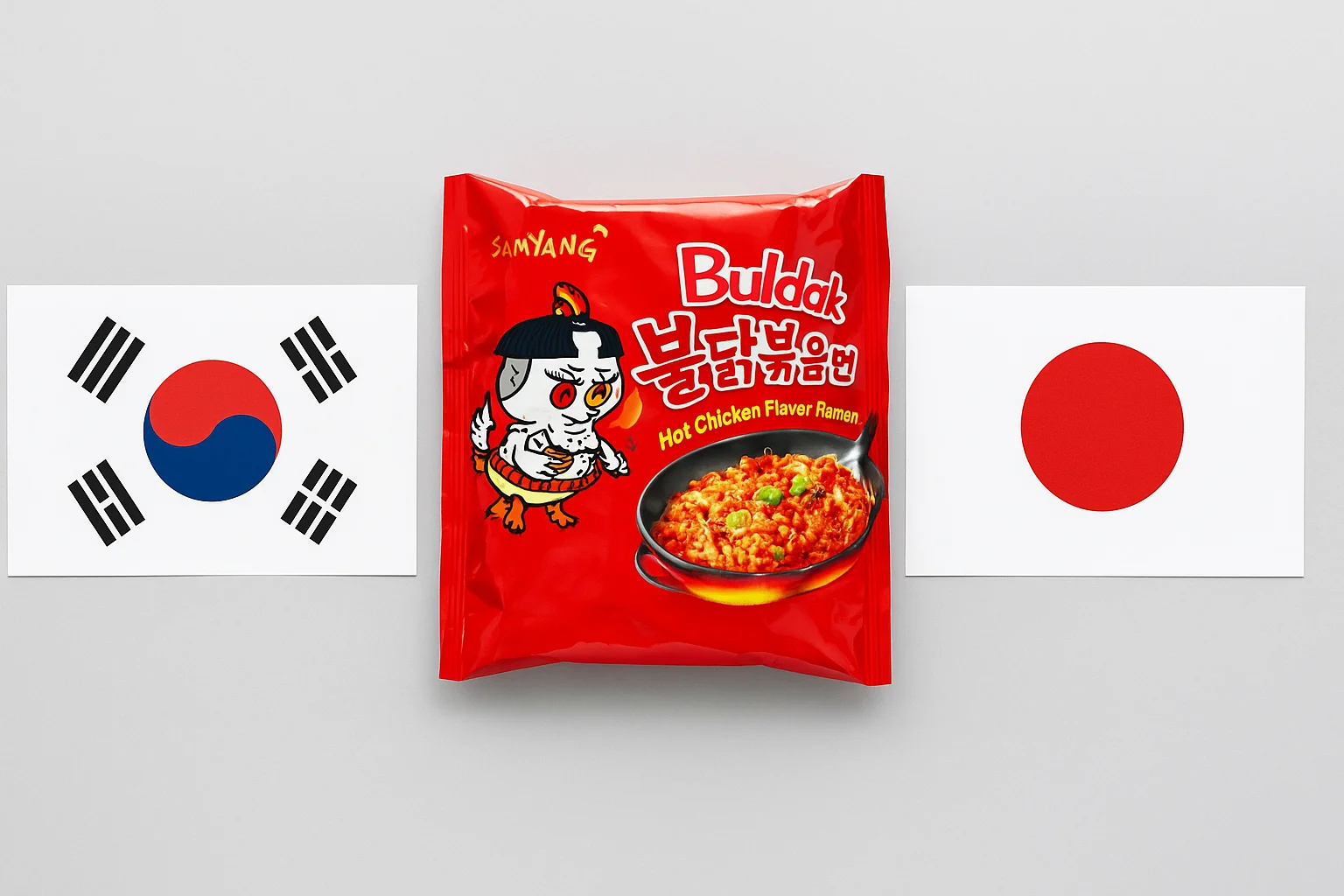You’ve seen the fire chicken mascot. You’ve felt the burn. But maybe you’ve asked yourself—is Buldak Korean or Japanese? You hear “ramen” and think of Japan. But the sauce tastes like Seoul. So, what’s the real story?
Why People Get Confused About Buldak Ramen
Buldak Ramen is Korean, but the word “ramen” makes people think it’s Japanese. The confusion comes from the name, not the product. The noodles are Korean, the brand is Korean, and the dish it’s based on started in South Korea.
The word “ramen” is Japanese, and instant noodles originated there. That’s why many people assume any spicy noodle pack with “ramen” must be Japanese. But that’s not how this one works.
Buldak ramen noodles didn’t come from Japan. It was made in Korea by a Korean company and has nothing to do with Japanese ramen shops or flavours. So if you’ve been mixing it up, you’re not alone—but now you know better.
Where Buldak and Buldak Ramen Come From
The word “Buldak” (불닭) means “fire chicken” in Korean. It started as a super-spicy grilled chicken dish that became a hit in Seoul back in 2001.
That dish was meant to be a challenge. Restaurants served it to people who said they could handle severe heat. It was coated in chilli paste, red pepper flakes, soy sauce, and garlic. People lined up to sweat through it.
Samyang, a Korean food company, saw the popularity of fire chicken and turned it into instant noodles. In 2012, they launched Buldak Bokkeum Myun—stir-fried fire chicken noodles. That’s the pack most people now call “Buldak Ramen.”
The idea was simple: bring the heat of fire chicken to everyone, but in noodle form. And it worked. People went nuts over it. YouTube challenges, spicy food rankings, and noodle slurping contests followed.
Why Buldak Ramen Isn’t Japanese
Buldak Ramen isn’t Japanese because it was invented, produced, and sold by a Korean company based on a Korean dish. It uses Korean spices, branding, and recipes—even if the packaging says “ramen.”
Instant noodles may have started in Japan, but Korea created its own style. Korean ramen is thicker, chewier, and often spicier. It also comes with bold flavours like kimchi, jjajang (black bean), and buldak.
Samyang’s Buldak line is made in South Korea. The instructions, labels, and chicken mascot are all in Korean. The pack also prints Hangul (the Korean alphabet).
So while the word “ramen” is Japanese, this product isn’t. It’s like calling something “pizza” doesn’t mean it’s from Italy. Words travel, but the food behind them tells the real story.
How Buldak Ramen Took Korean Food Global
Buldak Ramen became one of the most famous spicy noodles in the world, helping introduce Korean flavors to people who had never tried them before.
The Fire Noodle Challenge went viral. People recorded themselves crying, sweating, and laughing while eating the 2x Spicy version. Millions of views poured in. Samyang had to ramp up production to keep up.
But it didn’t stop at YouTube. Korean food started popping up everywhere—KBBQ spots, kimchi on grocery shelves, and Korean sauces in your pantry. Buldak Ramen played a part in that.
When people try Buldak Ramen, they taste gochujang (Korean chilli paste), garlic, sesame oil, and soy. These are Korean flavours, not Japanese ones. And once you get used to them, you want more.
This little red packet has done a lot of heavy lifting for Korean cuisine.
Final Answer
Buldak Ramen is 100% Korean. It’s made by a Korean company, based on a Korean dish, and packed with Korean ingredients. The word “ramen” is Japanese, but the food inside is pure Korean.
So if you love Buldak, you’re a fan of Korean food. And that’s something worth knowing, especially when someone tries to tell you otherwise. The confusion ends here.
Next time you slurp up that fiery bowl, know you’re tasting the heat and heart of Korea, not Japan.

